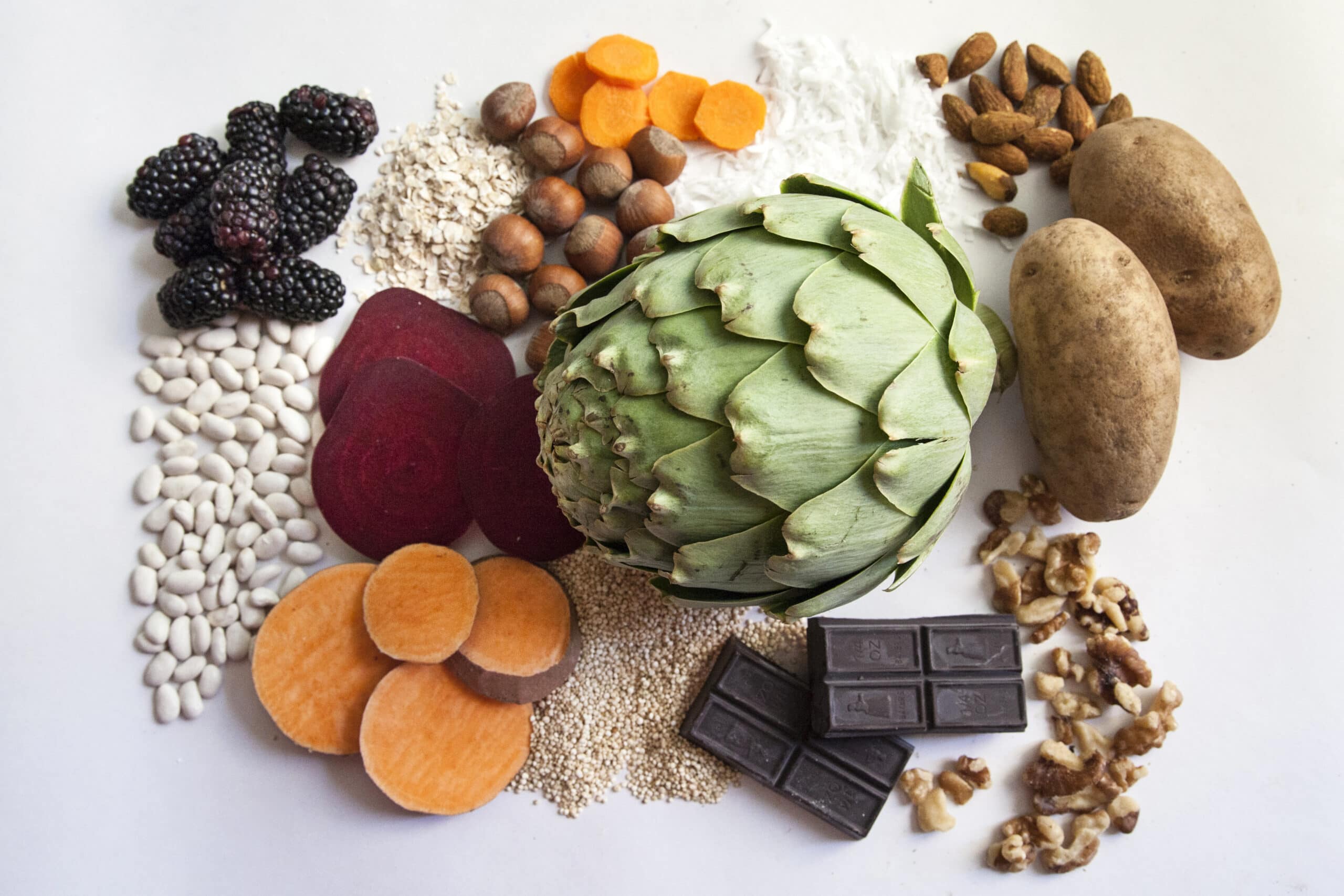Home>Gardening Basics>Understanding Soil>Which Material Gives The Soil Its High Fertility


Understanding Soil
Which Material Gives The Soil Its High Fertility
Published: February 11, 2024
Discover how understanding soil and its fertility can be attributed to specific materials, enhancing your knowledge of soil composition and its impact on plant growth. Explore the factors that contribute to soil fertility and learn about the role of different materials in enriching the soil. Unlock the secrets of soil fertility and maximize the potential of your gardening and agricultural endeavors.
(Many of the links in this article redirect to a specific reviewed product. Your purchase of these products through affiliate links helps to generate commission for Chicagolandgardening.com, at no extra cost. Learn more)
Table of Contents
Introduction
The Foundation of Soil Fertility
Soil fertility is the cornerstone of successful agriculture, playing a pivotal role in the growth and yield of crops. It encompasses a diverse array of factors, including organic matter, minerals, and soil texture, all of which contribute to the soil's ability to support plant life. Understanding the components that contribute to soil fertility is crucial for sustainable and productive farming practices. In this article, we delve into the fundamental elements that imbue soil with its high fertility, shedding light on the intricate interplay of organic matter, minerals, and soil texture. By comprehending the underlying mechanisms that drive soil fertility, farmers and agricultural enthusiasts can make informed decisions to optimize the productivity of their land.
The intricate web of factors that contribute to soil fertility underscores the complexity of this vital resource. By examining the role of organic matter, the importance of minerals, and the impact of soil texture, we can gain a holistic understanding of the elements that underpin soil fertility. This knowledge equips us to harness the potential of the soil, nurturing its fertility to support sustainable agriculture and ensure food security for future generations. Let's embark on a journey to unravel the mysteries of soil fertility, uncovering the secrets hidden beneath the earth's surface.
The Role of Organic Matter in Soil Fertility
Organic matter serves as a cornerstone of soil fertility, playing a multifaceted role in sustaining the health and productivity of the soil. It encompasses a rich tapestry of decomposed plant and animal residues, microorganisms, and humus, all of which contribute to the soil’s ability to support robust plant growth. The presence of organic matter in the soil fosters a myriad of benefits, ranging from enhancing soil structure and water retention to facilitating nutrient cycling and fostering a hospitable environment for beneficial microorganisms.
One of the pivotal roles of organic matter lies in its capacity to improve soil structure. The organic residues and humus act as a binding agent, promoting the formation of stable soil aggregates. This, in turn, enhances soil porosity and aeration, allowing for improved water infiltration and root penetration. Furthermore, organic matter serves as a reservoir for essential nutrients, gradually releasing them to plants as they decompose. The intricate web of microorganisms thriving in organic matter also contributes to nutrient availability, as they partake in the decomposition process and aid in nutrient mineralization.
Moreover, organic matter plays a crucial role in water retention, particularly in sandy soils. The presence of organic residues enhances the soil’s capacity to hold onto moisture, mitigating the risk of drought stress for plants. Additionally, the organic matter acts as a buffer, preventing rapid nutrient leaching and ensuring a steady supply of nutrients for plant uptake. The diverse array of microorganisms harbored within organic matter also contributes to soil fertility by fostering symbiotic relationships with plant roots, aiding in nutrient acquisition and bolstering plant resilience against diseases.
In essence, organic matter stands as a linchpin of soil fertility, orchestrating a symphony of processes that sustain the health and productivity of the soil. Its multifaceted contributions, from enhancing soil structure and water retention to fostering nutrient availability and supporting beneficial microorganisms, underscore the indispensable role it plays in nurturing fertile soils. By recognizing the significance of organic matter and implementing practices to preserve and augment its presence in the soil, farmers and agricultural enthusiasts can fortify the foundation of sustainable and productive agriculture.
The Importance of Minerals in Soil Fertility
Minerals constitute a fundamental aspect of soil fertility, wielding a profound influence on the soil’s capacity to nurture thriving plant life. The presence and balance of essential minerals in the soil are critical for sustaining robust plant growth and ensuring optimal crop yields. A diverse array of minerals, including macronutrients such as nitrogen, phosphorus, and potassium, as well as micronutrients like zinc, iron, and manganese, collectively contribute to the soil’s fertility by facilitating crucial physiological processes within plants.
Macronutrients, such as nitrogen, phosphorus, and potassium, play a pivotal role in supporting various facets of plant growth and development. Nitrogen, an essential component of chlorophyll, is indispensable for photosynthesis and the production of proteins, driving vigorous leaf and stem growth. Phosphorus fosters strong root development, aids in energy transfer within plants, and contributes to flower and fruit production. Potassium, on the other hand, promotes disease resistance, enhances water uptake, and bolsters overall plant vigor.
Besides macronutrients, micronutrients also exert a profound impact on soil fertility and plant health. These trace elements, though required in smaller quantities, are indispensable for carrying out vital physiological and biochemical processes within plants. For instance, iron is crucial for chlorophyll synthesis, zinc plays a pivotal role in enzyme activation, and manganese contributes to photosynthesis and nitrogen metabolism. The harmonious presence of these micronutrients in the soil is essential for ensuring optimal plant growth and mitigating the risk of nutrient deficiencies.
Furthermore, the availability of minerals in the soil is contingent upon various factors, including soil pH, organic matter content, and microbial activity. Soil pH profoundly influences the solubility and uptake of minerals by plants, with different minerals exhibiting optimal availability within specific pH ranges. Organic matter serves as a reservoir for essential minerals, gradually releasing them to plants as it decomposes. Additionally, the intricate web of microbial activity in the soil plays a pivotal role in mineral cycling, aiding in the transformation and availability of nutrients to plants.
In essence, the intricate interplay of minerals within the soil underscores their pivotal role in nurturing soil fertility and sustaining robust plant growth. By comprehending the significance of minerals and implementing practices to maintain their optimal balance in the soil, farmers and agricultural enthusiasts can fortify the foundation of fertile soils, paving the way for bountiful harvests and sustainable agriculture.
The Impact of Soil Texture on Fertility
Soil texture stands as a defining factor in determining the fertility and productivity of the soil, exerting a profound influence on its physical, chemical, and biological properties. The composition of soil particles, encompassing sand, silt, and clay, collectively shapes the soil’s texture and profoundly impacts its capacity to support robust plant growth. Understanding the implications of soil texture is crucial for optimizing agricultural practices and harnessing the full potential of the soil.
The physical properties of soil texture, including particle size and arrangement, significantly influence the soil’s capacity to retain water and nutrients. Sandy soils, characterized by larger particles, tend to have low water and nutrient retention capacity, often necessitating frequent irrigation and fertilization to sustain plant growth. Conversely, clay soils, comprised of smaller particles, exhibit high water and nutrient retention but are prone to waterlogging and compaction. Silt soils, situated between sand and clay in terms of particle size, offer a balanced compromise, providing adequate water and nutrient retention while mitigating drainage issues.
Moreover, the chemical properties of soil texture play a pivotal role in determining nutrient availability and pH levels. The surface area available for chemical reactions in clay soils is substantially higher than in sandy soils, resulting in enhanced nutrient retention and availability. However, the tight structure of clay soils can also lead to nutrient imbalances and hinder root development. Sandy soils, although less adept at retaining nutrients, offer better aeration and drainage, mitigating the risk of waterlogged conditions that can impede root growth.
The biological properties of soil texture are intertwined with its physical and chemical attributes, influencing microbial activity, root penetration, and overall soil health. The arrangement of soil particles and the pore spaces between them directly impact microbial colonization and root exploration, thereby influencing nutrient cycling and organic matter decomposition. Understanding the implications of soil texture on biological activity is crucial for fostering a hospitable environment for beneficial microorganisms and promoting robust root development.
In essence, soil texture serves as a pivotal determinant of soil fertility, exerting a far-reaching impact on the physical, chemical, and biological properties of the soil. By comprehending the implications of soil texture and implementing tailored agricultural practices, farmers and agricultural enthusiasts can optimize soil fertility, harnessing its full potential to support sustainable and bountiful crop production.
Unveiling the Secrets of Soil Fertility
The intricate web of factors that underpins soil fertility, from organic matter and minerals to soil texture, underscores the multifaceted nature of this vital resource. By delving into the role of organic matter, we uncover its capacity to enhance soil structure, foster nutrient availability, and promote water retention, thereby serving as a linchpin of soil fertility. The importance of minerals in soil fertility becomes apparent as we recognize their role in sustaining robust plant growth, facilitating vital physiological processes, and influencing nutrient availability. Furthermore, the impact of soil texture on fertility highlights the profound influence of soil composition on water retention, nutrient availability, and biological activity, shaping the soil’s capacity to support thriving plant life.
Understanding the intricacies of soil fertility equips farmers and agricultural enthusiasts with the knowledge to optimize the productivity of their land, fostering sustainable agriculture and ensuring food security. By recognizing the pivotal role of organic matter and minerals, and comprehending the implications of soil texture, we can implement tailored practices to fortify the foundation of fertile soils. Whether through the incorporation of organic amendments to bolster organic matter, the judicious application of fertilizers to maintain optimal mineral balance, or the adoption of soil management practices to mitigate the limitations of soil texture, there exist myriad strategies to nurture soil fertility.
As we unravel the secrets hidden beneath the earth’s surface, we unveil the potential of soil fertility to sustain bountiful harvests and support the burgeoning demands of a growing population. By harnessing the intricate interplay of organic matter, minerals, and soil texture, we embark on a journey toward sustainable agriculture, where the soil stands as a resilient and bountiful foundation for nourishing plant life. Through our steadfast commitment to nurturing the fertility of the soil, we pave the way for a flourishing agricultural landscape, ensuring the prosperity of current and future generations.




